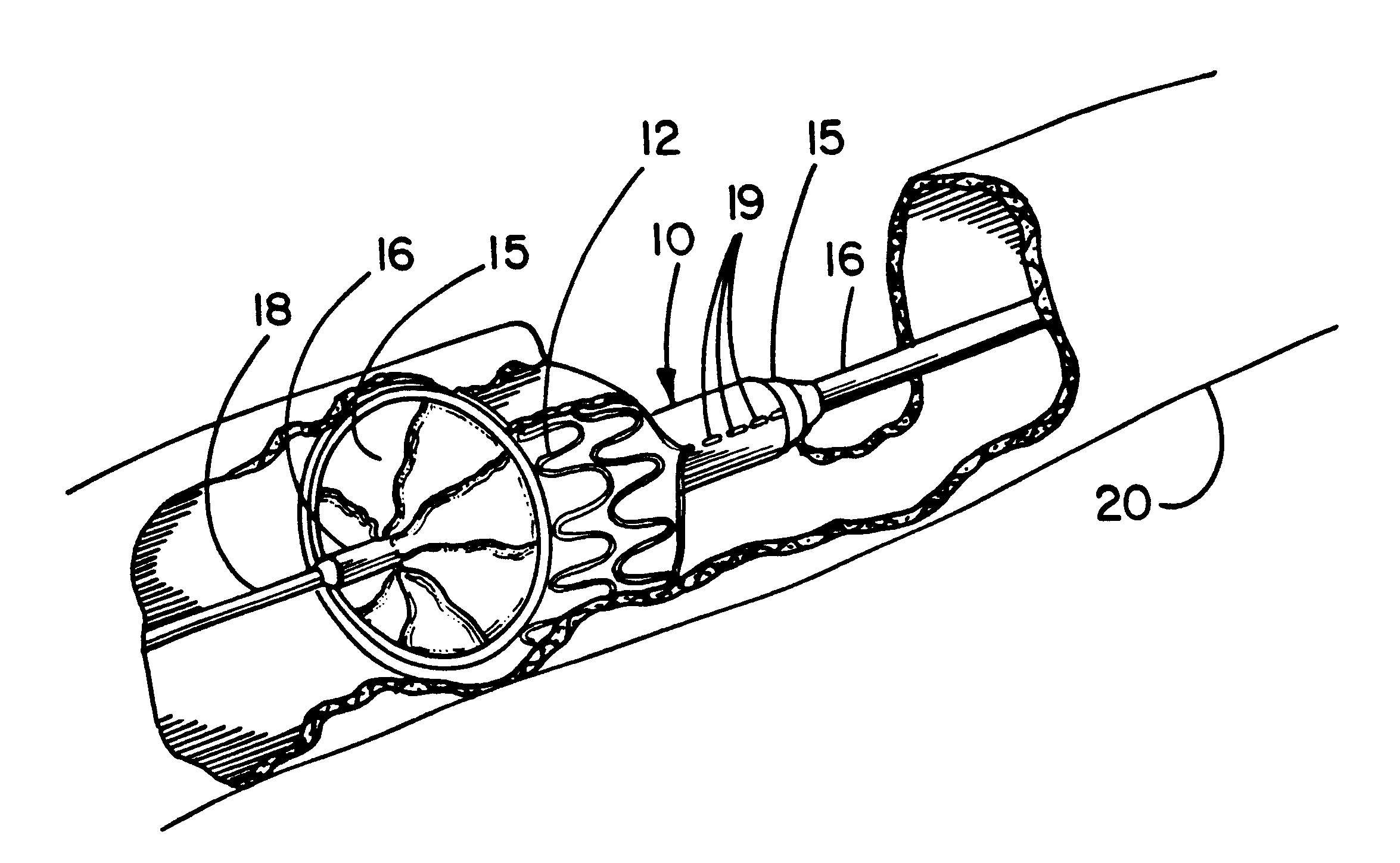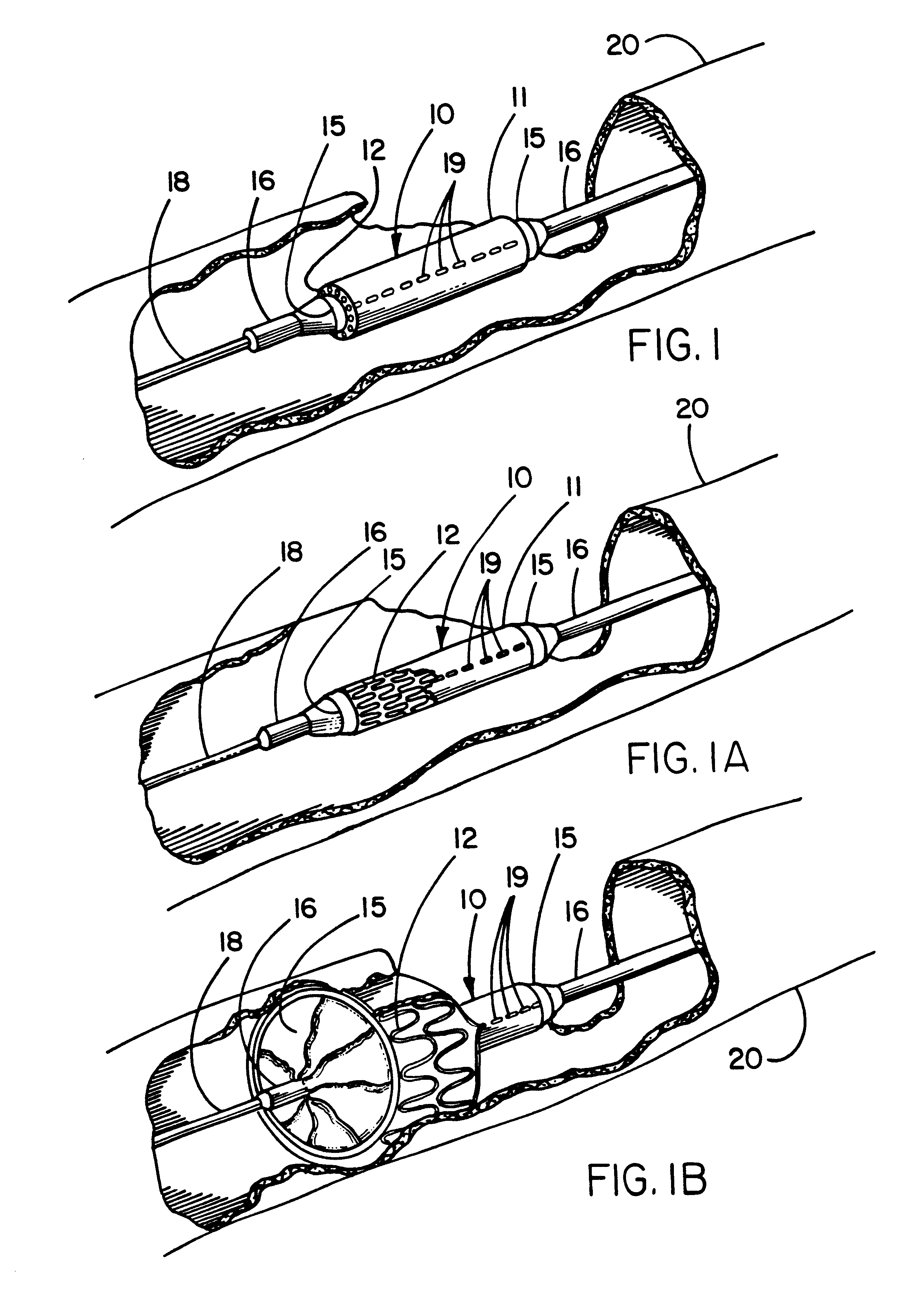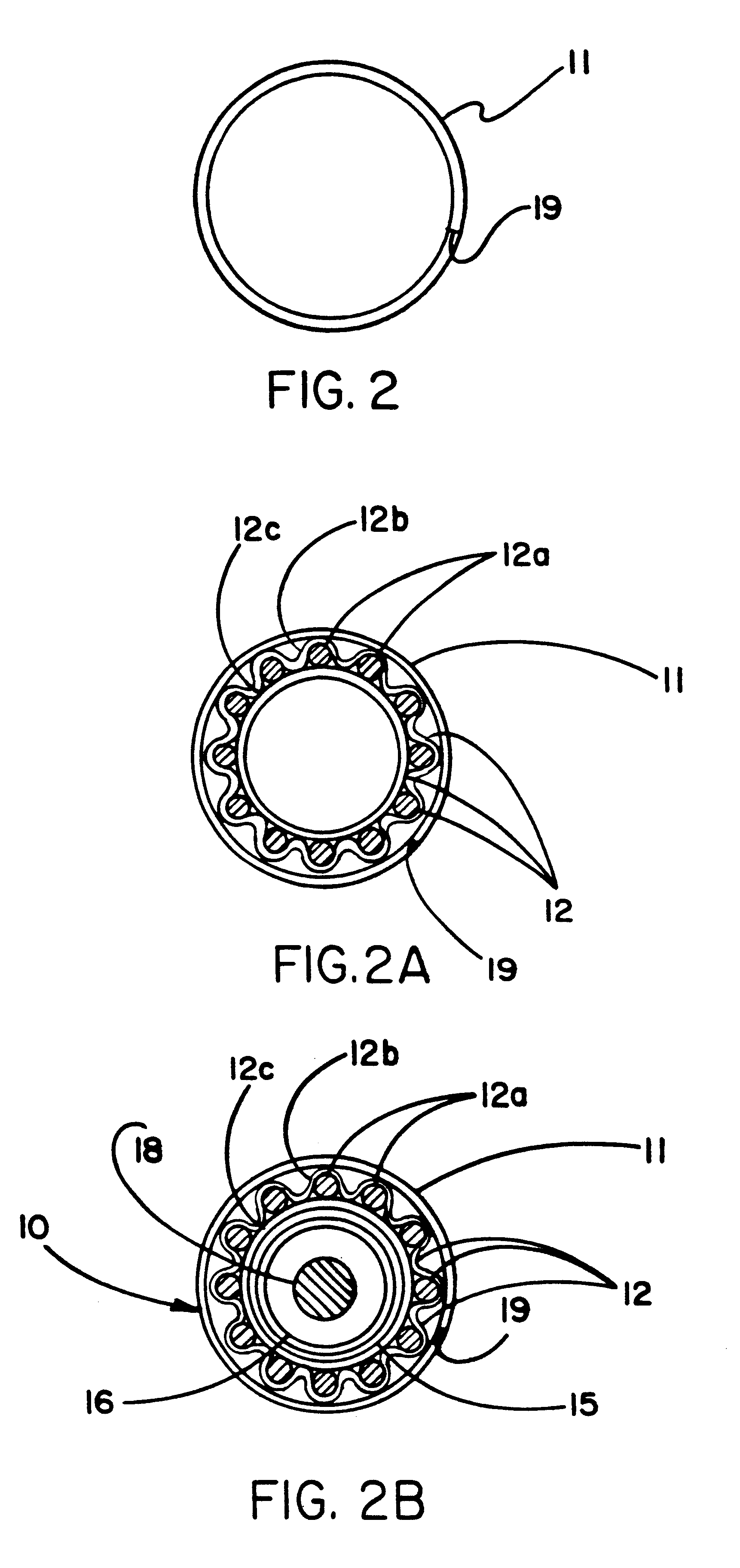[0016]With regard to either a self-expanding or a balloon expandable endoprosthesis, the constraining sheath may be employed to provide a smoother and more lubricious exterior surface during delivery than would be possible with a
balloon expandable stent that would otherwise present a relatively rough exterior surface to the lumen of the
blood vessel into which it is inserted.
[0017]The break-away constraining sheath of the present invention overcomes many of the disadvantages of the previously described delivery systems and establishes numerous unique advantages. The sheath of the present invention, particularly when made of ePTFE, has a much smoother, continuous outer surface than the
fiber based systems, which may reduce the incidence of iatrogenic endothelial traumatization. It may be used to deploy a device beginning at the tip end and progressing to the hub end (i.e., distal end to proximal end), or hub end to tip end, or both ends toward the middle, or middle to both ends. The constraining sheath when made of a preferred ePTFE material may be provided with an extremely
thin wall thickness (adding only 0.025-0.050 mm to total introductory profile) while providing extremely high strength. This enables substantial diametrical compaction of the device. The ePTFE sheath can allow almost immediate
tissue ingrowth due to its inherent
porous microstructure and thereby assist in anchoring the endoprosthesis. The sheath can be affixed to the exterior of an endoprosthesis, or alternatively can be provided without direct attachment to the endoprosthesis.
[0019]The deployment mechanism mimics the procedural techniques used with popular balloon-expandable endoprostheses and thus will require minimal user training. The flexibility of the
delivery system is minimally compromised, which is important for device delivery through tortuous
anatomy. Reliability of deployment may be improved. There is a high
degree of confidence in deployment reliability since this constraint is not compromised by subsequent stitching or the use of pull strings, rip-cords or deployment lines,
creep of constraints, overcoming high static frictional forces, etc. Since the sheath is provided over an endoprosthesis mounted on the
angioplasty balloon, this
system affords the opportunity for “primary stenting,” that is, device implantation without preceding
balloon dilatation of the host vessel. If primary stenting proves feasible for the particular patient,
fluoroscopy time may be reduced (reducing the
exposure of both patient and clinician to x-
ray), as well as overall procedural time and expense. Risk of emboli formation may also be reduced. Additionally, once implanted, the self-expanding device is completely unconstrained, thereby allowing for compensatory remodeling (i.e., continued enlargement of the endoprosthesis over time).
[0022]Disruption of the inventive constraining sheath is possible via other methods which typically involve creating a line or zone of
weakness along the length of the sheath such as by the use of a lesser amount of material in the zone of
weakness. Other methods of creating a zone of
weakness may include the application of thermal or
mechanical treatments to a localized region. Additionally, active elements such as spring components or elastic segments included with the sheath may be used to facilitate constraining sheath removal.
[0024]The constraining sheath may be imbibed with various pharmaceutical, biological, or genetic therapies for targeted luminal delivery of these substances. Following deployment of the endoprosthesis, these therapeutic agents can be released over time. An
advantage of this approach is that the loading of the sheath with any of these therapeutic agents can be performed independent of the endoprosthesis manufacture. Further, radiopaque elements may be incorporated into the constraining sheath to facilitate fluoroscopic
visualization.
 Login to View More
Login to View More  Login to View More
Login to View More 


